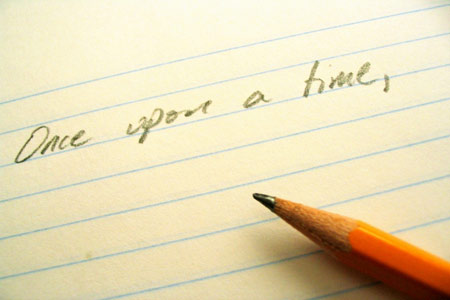If there is one thing that I must qualify myself as, among the ridiculously diverse array of things that have caught my fancy, it would be as a storyteller. I have been writing all of my life, essentially, starting at age 7 when, inspired by the Brothers Grimm and Aesop, I penned a collection of children’s fables. Since then, I have used prose, poetry, music, stage, film, and computers to tell stories, but I have never seriously embarked upon what could be the Quest for the Holy Grail of storytelling – writing a novel.
Oh, I’ve toyed with the idea, and fantasized about how cool it would be to publish a break-out book. I’ve even started a few (well… more like a dozen or so). But I have never sat down and worked at it. Screenwriting, playwrighting and directing have always drawn me away for being serious about a novel. And as it happens, it is actually screenwriting that got me to the point that I find myself wanting to get serious about writing a full-length piece of fiction.
My lovely wife, constant companion, creative partner, and muse, Tina Cardinale, and I have been working diligently on two projects for the past several years. One of which is a high-budget, summer blockbuster type of film script. The problem is… drum roll, please… WRITER’S BLOCK! Something I never thought I’d have out of hubris or naivety or whatever. But it hit and stalled the project. After much research and introspection, and a lot of painful talks with myself, I came to realize that the block was not some sort of inexplicable loss of creativity, or drying up of the wellspring, but rather the simple fact that there were parts of the story that I did not fully understand or have answers for.
That’s good! Right? That is solvable, surmountable, and ultimately the path to better storytelling! But… long investigations into the various possibilities lead to more questions rather than paths to solutions. So, I decided to write the script as a novel, so that we could adapt source material into a screenplay. This way I can do away with the conventions of telling a story for the screen and focus solely on what the story is.
Completion is key. Neil Gaiman, one of my storytelling heroes, and, arguably, one of the greatest storytellers of all time, once said that he began writing short stories so he could teach himself how to complete a project. This is more difficult than it sounds. It is easy to get caught up in editing, re-writing, and incessant second-guessing one’s choices. Often times, the difficulty in completion is due to the fact that unless someone has given you a bunch of money, and a very important deadline to go along with it, it is very easy to never get there. Artists are supposed to let their minds wander. It is what fuels the creative wellspring. My mind just happens to wander far and often, and as such it makes completion a particularly difficult endeavor.
So, in the absence of the important deadline (and the bunch of money that goes with it), I have decided to, for better or worse, use this blog as a taskmaster. I am beginning the book in conjunction with this post, and will keep you, Dearest Reader (if you are even there), apprised of the progress, the joy, the pain, and all of the unsteadiness that goes with telling a long-form story. I may even try to post excerpts or peripheral material for you to throw tomatoes at, should you wish.
I hope you will go on the ride with me, and I hope that it serves its purpose, as well as has the desired effect. For if it does, then not only with this blog be fun, but there will be an even larger prize at the end of it for us both!
Let the Bloodletting begin…









